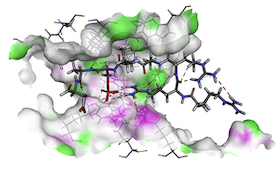Integrating bioinformatics and experimental models to investigate the mechanism of the chelidonine-induced mitotic catastrophe via the AKT/FOXO3/FOXM1 axis in breast cancer cells
DOI:
https://doi.org/10.17305/bb.2023.9665Keywords:
Chelidonine, breast cancer (BC), AKT/FOXO3/FOXM1 axis, cell cycle arrest, mitotic catastropheAbstract
Breast cancer (BC) is currently the most frequent and lethal cancer among women, and therefore, identification of novel biomarkers and potential anticancer agents for BC is crucial. Chelidonine is one of the main active ingredients of Chelidonium majus, which has been applied in Chinese medicine prescriptions to treat cancer. This paper aimed to evaluate the ability of chelidonine to trigger mitotic catastrophe in BC cells and to clarify its mechanism through the AKT/FOXO3/FOXM1 pathway. Bioinformatics analysis revealed that forkhead box O3 (FOXO3) was downregulated in different subtypes of BC. Factors such as age, stage, Scarff-Bloom-Richardson (SBR) grade, diverse BC subclasses, and triple-negative status were inversely correlated to FOXO3 levels in BC patients compared with healthy controls. Notably, patients exhibiting higher FOXO3 expression levels demonstrated better overall survival (OS) and relapse-free survival (RFS). Moreover, FOXM1 levels were negatively correlated with both OS and RFS in BC patients. These results revealed that FOXO3 might be considered a predictive biomarker for the prognosis of BC. By utilizing Gene Set Enrichment Analysis (GSEA), we delved into the main Kyoto Encyclopedia of Genes and Genomes (KEGG) enrichment pathways of FOXO3, and the results suggested that FOXO3 was mainly involved in cancer-related pathways and the cell cycle. Thereafter, MTT and flow cytometry (FCM) analysis indicated that chelidonine inhibited BC cell line proliferation and induced M phase arrest. It was found that chelidonine treatment induced MCF-7 cell apoptosis, significantly reduced the expression of survivin and promoted the expression of p53 and caspase-9. Further morphological observation illustrated depolymerization of the actin skeleton and shortening of actin filaments in BC cells, leading to the typical characteristics of mitotic catastrophe, such as abnormal mitosis and multinucleated cells. Western blot analysis demonstrated that chelidonine inhibited the expression of p-AKT to promote the expression of FOXO3 protein and weaken the expression levels of FOXM1 and polo-like kinase 1 (PLK1). Taken together, our present work proved that FOXO3 might be considered a potential therapeutic target for BC. Chelidonine emerges as a promising agent to treat BC by inducing M phase arrest of BC cells and hindering the AKT/FOXO3/FOXM1 axis, thereby inducing mitotic catastrophe in BC.
Citations
Downloads

Downloads
Published
Issue
Section
Categories
License
Copyright (c) 2023 Huimin Li, Xiyu Tang, Zhiwei Sun, Zhongyuan Qu, Xiang Zou

This work is licensed under a Creative Commons Attribution 4.0 International License.
How to Cite
Accepted 2023-10-25
Published 2024-05-02









